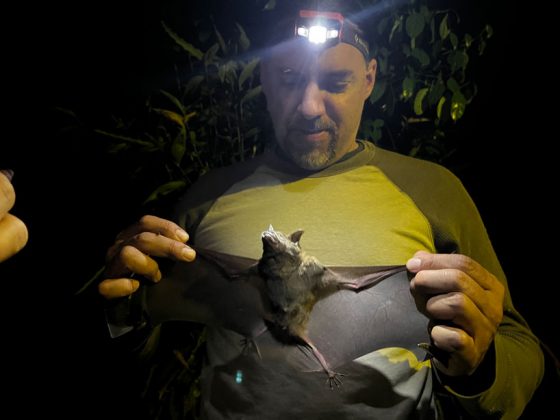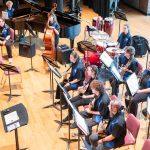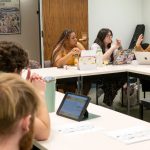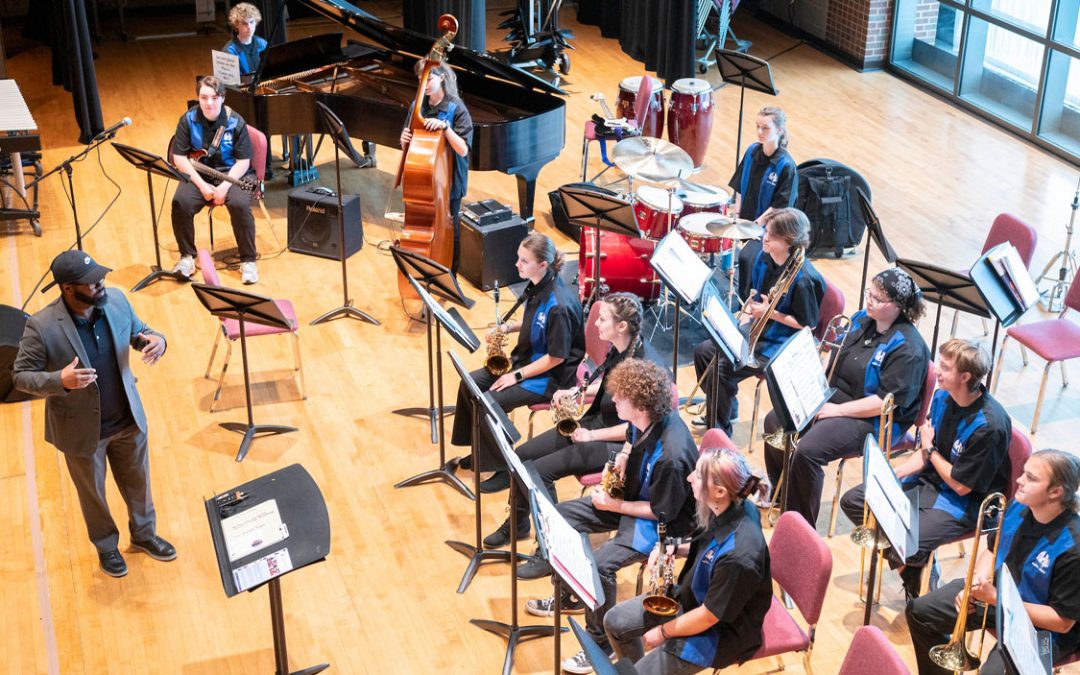
Nathan Muchhala, an associate professor in the Department of Biology, recently returned from sabbatical in Colombia and Ecuador. (Photo by Derik Holtmann)
Unlike most people, Nathan Muchhala is drawn to, rather than repelled by, bats. After earning his BA in biology in 1998, the University of Missouri–St. Louis associate professor spent a year in Ecuador on a Fulbright Fellowship, studying the types of fruits that bats feed from and the flowers they pollinate. He fell in love with pollination and montane forests, and both have been central to his research ever since. In 2019, Muchhala co-authored a seminal paper demonstrating that some plants can reorient their flowers after damage to aid in pollination and the continued survival of the species. He recently also published research in the journal New Phytologist showing that flowers that are pollinated by bats tend to have long stems, helping them stand out from the surrounding foliage. He was granted a research sabbatical for 2023 to further his research and launch a large-scale project in the tropical forests of northern South America.

Muchhala’s research focuses on montane forests and pollinators, including bats. (Photo courtesy of Nathan Muchhala)
1. You were recently on sabbatical in countries including Colombia and Ecuador. What kind of research were you conducting?
We wanted to study our prediction that pollinators that fly farther, such as birds and bats, would move pollen, and thus genes, better than those that don’t move as far, such as bees, flies and wasps. We chose 20 plant species and collected hundreds of hours of video footage to document pollinators, and then collected leaf tissue for laboratory analyses. I also worked with biologists in both countries, local students and UMSL students. We captured nectar- feeding bats and held them for several days in screen tents to test how they use vision, echolocation and scent to find their flowers, and how their whiskers work in sensing flower position, allowing for easier nectar extraction.
2. What is the value of a sabbatical like this?
This sabbatical was invigorating, allowing me to devote undivided attention to research again. Being in the field observing nature is what drove me to become a biologist in the first place, and it was great to be able to do this with graduate students from my group as well as local students from both countries. It was also excellent for making connections – over the year, I gave eight talks to various universities and got a chance to chat with many biologists.
3. How does this project tie in with what students can experience working in your lab here at UMSL?
Many of my graduate students work in Latin America, so this experience was great for all of us to make connections and find other possible study sites. A lot of the data we collected will be processed here at UMSL with the help of undergraduate students, including tabulating pollinator information from videos and extracting DNA from the leaf samples for our genetic analyses.
4. What can the average person do – or not do – to help ensure pollinators can continue to thrive?
Pollinators need natural areas with native wildflowers. Preventing destruction of natural habitats, or restoring them, will help preserve both pollinators and their plants. Reducing use of pesticides in your yards and planting native wildflowers will also help maintain pollinator population.
5. Most people have a fear of bats. Was that something you had to overcome?
Interestingly, no. I’ve found them fascinating since I started working with them. However, extracting them from nets took some practice, that is, getting used to how to gently disentangle wings while preventing them from flying off!
This story was originally published in the fall 2024 issue of UMSL Magazine. If you have a story idea for UMSL Magazine, email magazine@umsl.edu.














